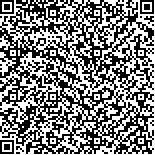Archive > Volume 39 Issue 4 > 2013,39(4):418-426. DOI:10.7519/j.issn.1000-0526.2013.04.003 Prev Next
Ambient Field Characteristics of Westbound Landing Tropical Cyclones Impacting Rainfall Process of Yunnan
- Article
- Figures
- Metrics
- Preview PDF
- Reference
- Related
- Cited by
- Materials
Abstract:
Using “the Northwest Pacific Tropical Cyclone Retrieval Yearbook System” data, NCEP/NCAR reanalysis data and Yunnan precipitation data, westbound landing tropical cyclones (TC) impacting the rainfall process of Yunnan during 1959-2007 are classified and analyzed in this paper.The results show that there are four types of circulation pattern including TC low circulation pattern, TC low outer circulation or inverted trough pattern, TC interacting with the two high convergence pattern, and TC low pressure interacting with trough cold air pattern. The ambient field characteristics show that when 100 hPa high pressure in South Asia is positioned to the west of 90°E, the strong divergence zone offered by the upper level easterly jet enhances the joining of the low level southwest monsoon flow with the TC circulation, and the difference of high and low level vorticities distributes negatively, making the TC low circulation maintained on land or slowing down the weakening. Abundant energy and moisture are provided for the rainstorms in Yunnan by the low level jet of southwest monsoon, subtropical high as well as the south low level jet accompanying TC. Severe precipitation often occurs on the left side of low level jet, near positive vorticity center of TC low or inverted trough. The atmospheric baroclinic instability increases with the advection of cold airs entering Yunnan, causing the enhancement of precipitation in the outer part of tropical cyclones.
Keywords:
Project Supported:
Clc Number:


Mobile website









